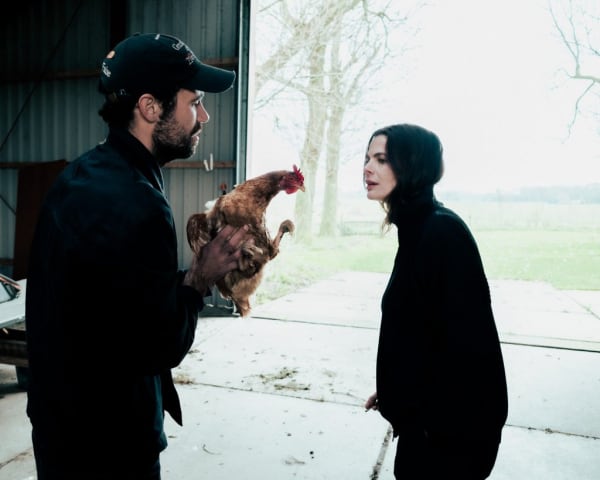Saskia Noor van Imhoff: Mineral Lick
GRIMM is pleased to announce Mineral Lick, the UK debut exhibition of acclaimed Dutch contemporary artist Saskia Noor van Imhoff in our London gallery. Van Imhoff examines systems, hierarchical structures, and ideas about collecting in her work. In recent years, she has expanded her focus beyond the institutional framework towards an outdoor space, acquiring a plot of rural farmland on the northern coast of the Netherlands.
This plot of land has become, as she defines it, an ’organic collection’ that she has been exploring in her work since moving, as she restores, responds to, and works with the historic land she lives on today. The ongoing body of work developing from this project has inspired two museum exhibitions at The Stedelijk Museum, Amsterdam (NL, 2022) and Fries Museum, Leeuwarden (NL, 2023).
Transplanting her studio practice to this former dairy farm in the Dutch countryside, Van Imhoff’s research has been drawn to the idea of the land as a repository of knowledge, an expression of its own history, and a resource to learn more about ourselves. The process of documenting and rehabilitating the site forms the basis of her work, creating installations that echo the space outside of their original environment - the resulting photographs and sculptural installations examining systems of perception, archiving and archaeology. Van Imhoff often takes apart familiar objects and recontextualizes them, continuously building on her own previous works. While addressing ideas of stewardship and our responsibility to and reliance on the land, she also questions the idea of a collection as a knowledge system and a mechanism that selects, differentiates, and classifies.
Van Imhoff explores the remnants and traces of the past in her sculptural work, seeking to understand the emotional residue of lives lived among forgotten and discarded sites. The farmstead left the land in disrepair, the soil was degraded and areas become a dumping ground for rubble and building materials in recent decades, which Van Imhoff has begun to sift through and cultivate to create a fertile new environment, beginning a new cycle of growth and regeneration. During this process, she has discovered vestiges of former use, which she has researched and documented throughout, incorporated into her work in the form of maps, objects and etchings that reference the former use of the plot of land.
Mineral Lick examines the meaning of (agri)cultural heritage and the role of the artist as a steward and custodian of the environment today through new work incorporating the imprint of the past use of land. For example in Grids, Nettles and Thistles (Nitrogen Traces), Van Imhoff reconstitutes rubber mats, previously used for herding cattle as the base for a series of etchings that document the plant life that was propagated to enrich the nitrogen content of grazing fields. These plants speak to the history and condition of the land, and to recent political imperatives that seek to reduce the Netherlands’ carbon dioxide emissions by downsizing its livestock.
Bringing an awareness to the knowledge held within materials themselves, Van Imhoff works with found objects on the former farmstead, including wooden beams or the sprawling roots of trees growing around the building. She employs a process of ‘grafting’ - a botanical technique to propagate and renew a cutting from a plant - as she casts part of an object in bronze and aluminium and creates a hybrid sculptural work that both preserves and monumentalises the material and its history. The rubber mats and wooden beams extracted from the site are testament to their origin, evolution, and current state simultaneously, referencing their former use, resistance to change, and the shifting meaning of the farm today.
As Vincent van Velsen, curator at the Stedelijk Museum, Amsterdam (NL) comments on her work; “objects contain ghost images: imprints that linger within the material structure of an object that are not necessarily derivable by the human eye, as they might also have repercussions beyond surface.” Van Imhoff’s process of grafting together objects becomes a metaphor for the progress of the land itself; by rethinking, recontextualising and reclaiming a site, new relationships are born, and new concepts of nature develop. Each artwork creates an opportunity to rethink the land and its use, value, and legacy.








